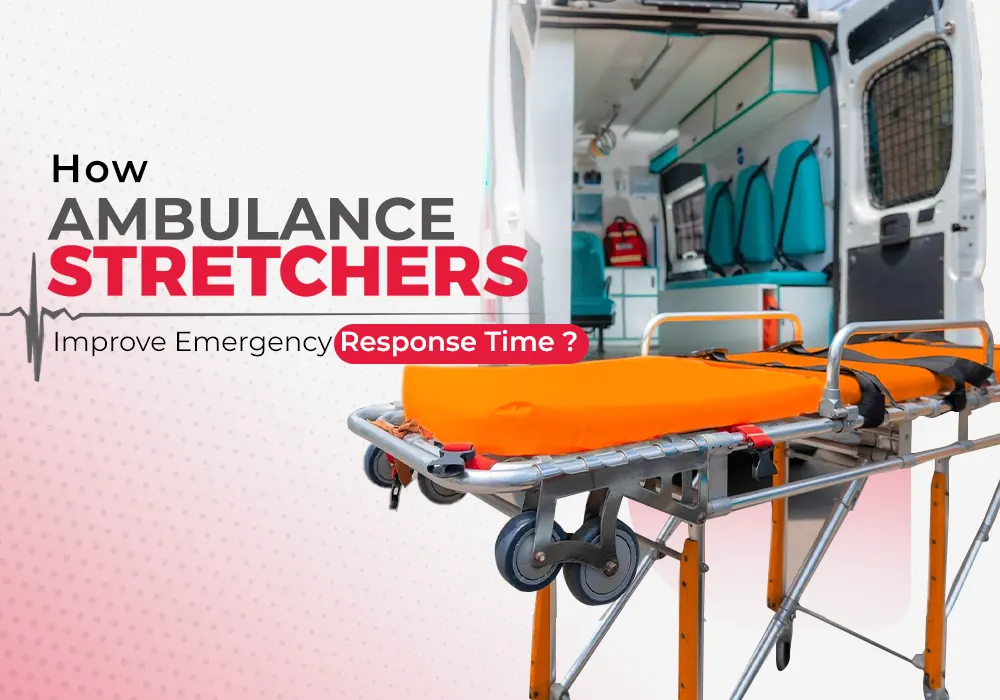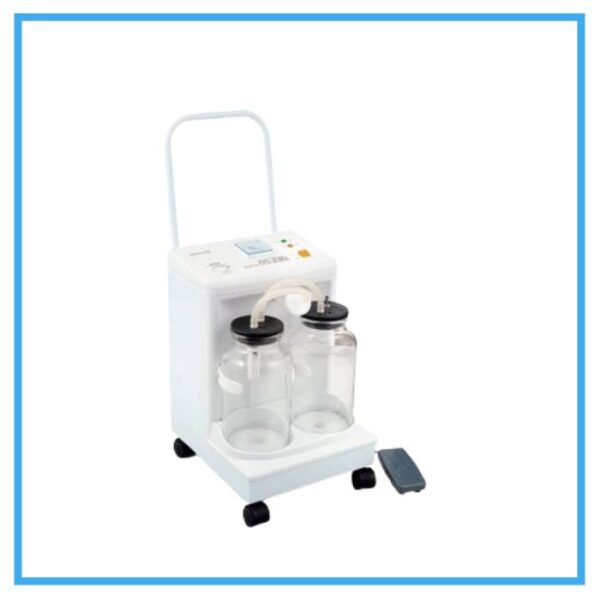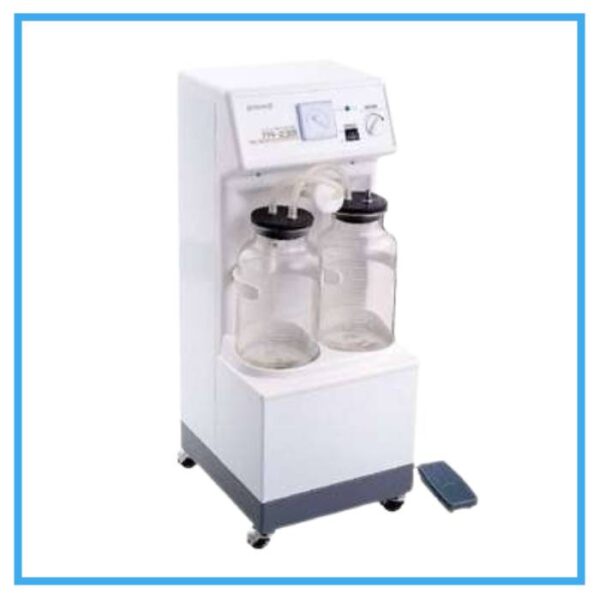In life-threatening situations, the difference between life and death can be a rapid as well as efficient medical response. The safe and swift transportation of a number of patients is a critical component of this response. Ambulance stretchers come in at that very location. By improving the mobility, and of the safety, and of the handling, these necessary medical devices help to reduce the emergency response time. Citi Scientific proudly offers top-quality ambulance stretchers that adequately meet the demands for emergency medical teams.
In this article, we will explore just how ambulance stretchers are indeed vital within emergency services, and we will explore the reasons why you must invest in the right stretcher equipment in order to save lives.
The Role of Ambulance Stretchers in Emergency Response
Designed with precision, ambulance stretchers are life-saving tools and not just simply beds on wheels. Emergency medical technicians (EMTs) do arrive at the scene itself. They are already facing a race against the time. An especially effective ambulance stretchers permits them to expediently transport patients from the incident site to the ambulance and then to a healthcare facility without undue delays or additional injury.
These stretchers improve emergency response. Let’s explore how.
1. Rapid and Safe Patient Loading
Modern ambulance stretchers have practical features in their design, such as hydraulic lifts plus foldable legs and easy-lock mechanisms. The time that is required in order to load a patient is reduced greatly. This also applies to the total time that it takes to unload each patient.
EMTs can swiftly adjust the stretcher’s height, lock the stretcher, in addition to load the patient into the ambulance without moving unnecessarily. Due to this, response time is in fact accelerated, and, what is more, patient condition does not worsen at all during transport.
2. Advanced Mobility Across All Terrains
From urban environments to remote locations that are uneven, various terrains can be handled by ambulance stretchers because these are built for such purposes. Smooth-glide wheels and durable shock-absorbing frames allow, in all instances, for smooth movement. This is useful on each section of pavement, blades of grass, or pieces of gravel.
In emergency scenarios in which the patient needs quick access as well as fast relocation, this adaptability is indeed important. You absolutely must have sufficient mobility if you carefully navigate a notably crowded building or rapidly respond to an accident in a truly remote area.
3. Seamless Integration with Ambulances
A quality ambulance stretcher can fit perfectly within the ambulance system, and that is one of its major strengths. Ambulance designs that are for today’s stretchers work in a good way with the emergency vehicles’ storage setups as well as with the locking mechanisms.
EMTs that do have appropriate fitting systems are able to spend a reduced amount of time worrying in relation to securing the stretcher and an increased amount of time focusing in relation to delivering emergency care. It also minimizes vibrations as well as shifting during transit, and this truly contributes to patient safety.
4. Patient Comfort and Injury Prevention
Every moment counts, every motion does too. Unstable or poorly-cushioned stretchers may cause injury or discomfort. This is particularly true for patients with spinal trauma, in most cases. It is also indeed true for patients who have fractures.
The most superb ambulance stretcher beds feature foam padding, adjustable headrests, and side safety rails. These elements offer support as well as stability, because they reduce pain in addition to anxiety for the patient during what is already a traumatic experience.
5. Operational Efficiency for Medical Staff
Emergency response isn’t only just about speed but it is also about clarity and teamwork when under pressure. Ambulance stretchers are designed with intuitive controls as well as lightweight materials, so that EMTs are able to easily handle them either alone or else in teams.
Staff injuries are reduced by a smaller amount of lifting strain. Ergonomic designs do additionally improve the way in which operations flow. In principle, the right ambulance stretcher becomes a valuable extension of the EMT team’s capability, which accelerates care and transport
Why Choose Citi Scientific?
At Citi Scientific, we understand that reliability and precision in emergency medical equipment are undeniably important. A variety of products are included in our line of goods.
Our catalog generally ensures whether you’re seeking a single patient shifting Emergency Stretcher for the ambulance or a heavy-duty stretcher bed.
Your response teams are equipped for handling real-time emergencies with confidence.
We offer each and every ambulance stretcher that is built for the purpose of complying with international safety and performance standards and that is rigorously tested. Our expert team is here to help you choose the right stretcher for your specific needs in addition.
Real-World Impact
Emergency services that invest in advanced ambulance stretchers consistently report better patient outcomes and faster response metrics. Hospitals and ambulance services across the globe are upgrading to state-of-the-art stretchers to meet growing demand and evolving emergency challenges.
Faster loading times, better patient positioning, and reduced EMT fatigue all translate into one key benefit, more lives saved.
FAQs About Ambulance Stretchers
Q1: What is the difference between a regular stretcher and an ambulance stretcher?
A: While both are used for patient transport, an ambulance stretcher is designed specifically for emergency vehicles. It has features like collapsible legs, locking wheels, and integration systems for ambulances, making it ideal for emergency response.
Q2: How much weight can a standard ambulance stretcher support?
A: Most modern ambulance stretchers can support between 150 to 250 kilograms, depending on the model. Heavy-duty versions are available for bariatric patients.
Q3: Are ambulance stretchers adjustable?
A: Yes, they are highly adjustable. You can modify height, backrest angle, and leg positioning to ensure maximum comfort and support for the patient.
Q4: What materials are used in high-quality ambulance stretchers?
A: Typically, stretchers are made from lightweight yet strong materials like aluminum alloy or stainless steel. The padding is often medical-grade foam with a washable surface.
Q5: How often should ambulance stretchers be maintained?
A: Regular maintenance is recommended every 3 to 6 months depending on usage. Daily checks should be done to ensure mechanical parts, wheels, and safety features are functioning correctly.
Conclusion
In the fast-paced world of emergency medical services, equipment that streamlines operations while protecting the patient is essential. Ambulance stretchers do exactly that. They are the bridge between first response and definitive care—speeding up the process while safeguarding lives.
With advanced ambulance stretcher beds and reliable patient shifting stretchers, Citi Scientific is proud to be a trusted partner in improving emergency response systems. Let us help you deliver life-saving care, faster and safer.






